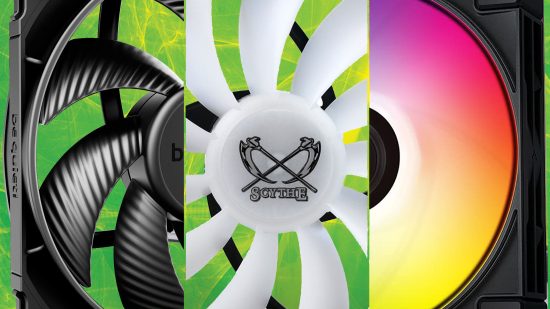Want to find the best PC fan? Well, you’re in the right place as our best PC fan guide lists the top choices available now. Whether priorities are low noise, high airflow, flashing RGB lighting, or performance with none of the dazzle, we’ve got a recommendation for you.
To learn how we test our PC fans, check out our how we test page or the how we test fans section below. You can also find the answers to some of the most common PC fan questions in the PC fan FAQ at the bottom of this page.
Here are the best PC fans in 2023:
- Deepcool FC120 – the best PC fan with RGB
- be quiet! Silent Wings 4 High Speed – the best silent PC fan
- Phanteks T30 – the best PC fan for high airflow
- Scythe Kaze Flex 120 RGB – the best budget PC fan with RGB
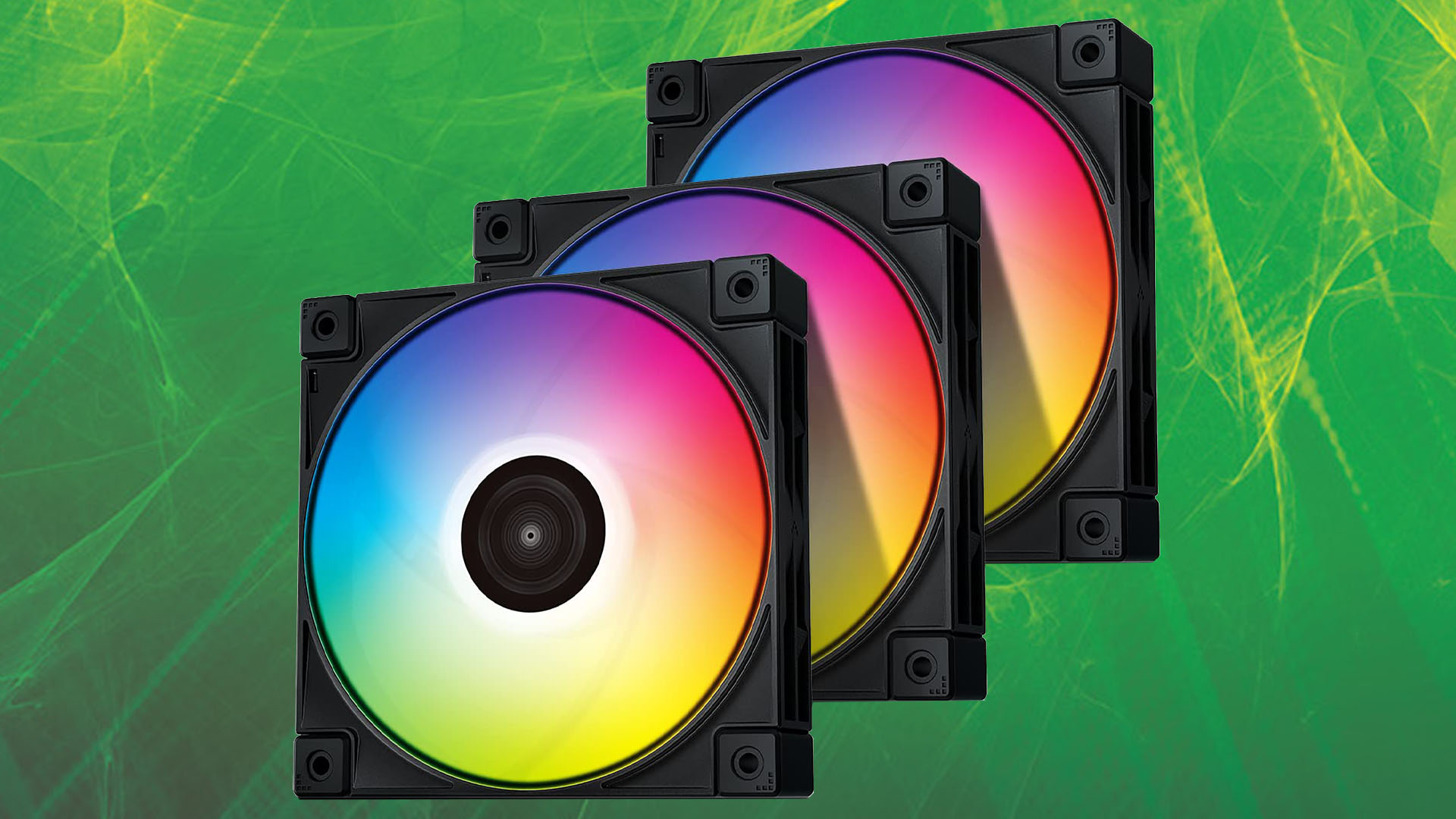
1. Deepcool FC120
The best PC fan with RGB is the Deepcool FC120.
Deepcool FC120 specs:
| Max speed | 1800rpm |
| Stated noise | 28dBA |
| PWM control | Yes |
| RGB lighting | Yes, 3-pin |
| Accessories | Daisy-chain cables |
Pros
- Great airflow-to-noise ratio
- Good airflow at 1,000rpm
- Superb value
Cons
- Limited maximum airflow
- No single-fan option yet
Offering an ideal balance of low noise and high airflow and including dazzling RGB lighting with a neat squared-off case design, the Deepcool FC120 has it all. Moreover, they can be daisy-chained together so only one set of cables is needed for several fans. They’re not the absolute cheapest RGB fans available but they offer excellent value. Find out more in our Deepcool FC120 review.
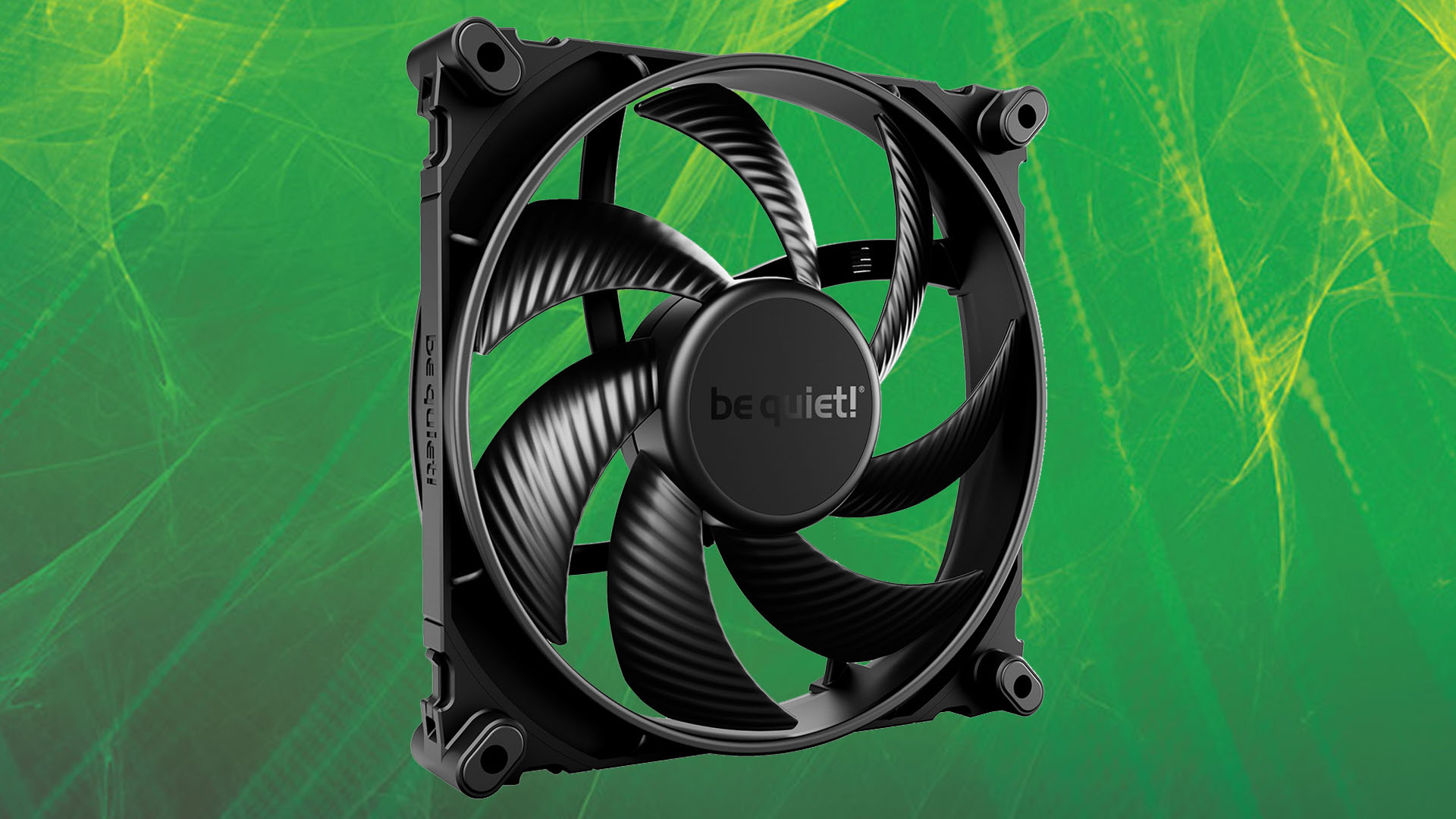
2. be quiet! Silent Wings 4 High Speed
The best silent PC fan is the be quiet! Silent Wings 4 High Speed.
be quiet! Silent Wings 4 High Speed specs:
| Max speed | 2500rpm |
| Stated noise | 31dBA |
| PWM control | Yes |
| RGB lighting | No |
| Accessories | Push-pin case mounts |
Pros
- Great airflow-to-noise ratio
- Good sound quality
- Decent top-speed airflow
Cons
- Average airflow at 1,000rpm
- No RGB lighting
- Pricey
Living up to its company name, the be quiet! Silent Wings 4 High Speed are whisper quiet yet still offer good airflow, making them ideal for any system that values efficiency and quiet airflow over all else. They’re not particularly attractive fans and lack RGB, plus they’re expensive, but if silence is golden these are 24 carot. Find out more in our full be quiet! Silent Wings 4 High Speed review.
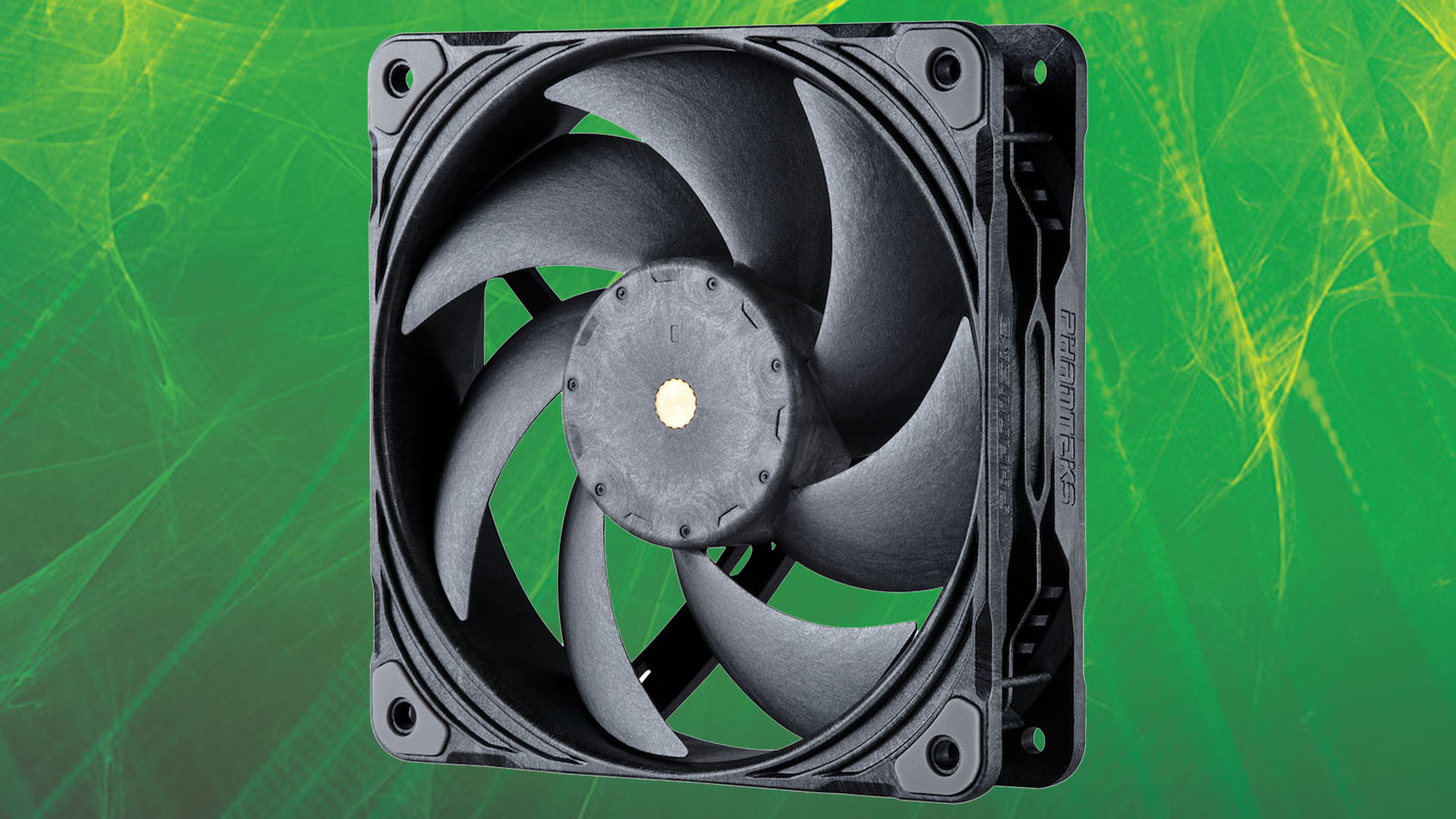
3. Phanteks T30
The best PC fan for high airflow is the Phanteks T30.
Phanteks T30 specs:
| Max speed | 3000rpm |
| Stated noise | 40dBA |
| PWM control | Yes |
| RGB lighting | No |
| Accessories | Radiator screws, Phanteks Halos screws, PWM extension cable |
Pros
- Monstrous airflow
- Excellent efficiency
- Low noise at low speeds
Cons
- Loud at full speed
- Expensive
- Cheaper fans are more efficient
If neither flashy RGB lighting nor silence is all that important to you but rather you just want pure power, the Phanteks T30 are the way to go. With a massive 3000rpm maximum speed these fans have huge airflow of 3.79m/sec, making them ideal for driving air through radiators or large coolers where static pressure is so important. They’re also reasonably efficient too, so can be reasonably quiet when not running at full blast, though other fans offer a slightly better balance. They’re not cheap but if sheer revs is what’s required, they’re the best bet. Find out more in our full Phanteks T30 review.
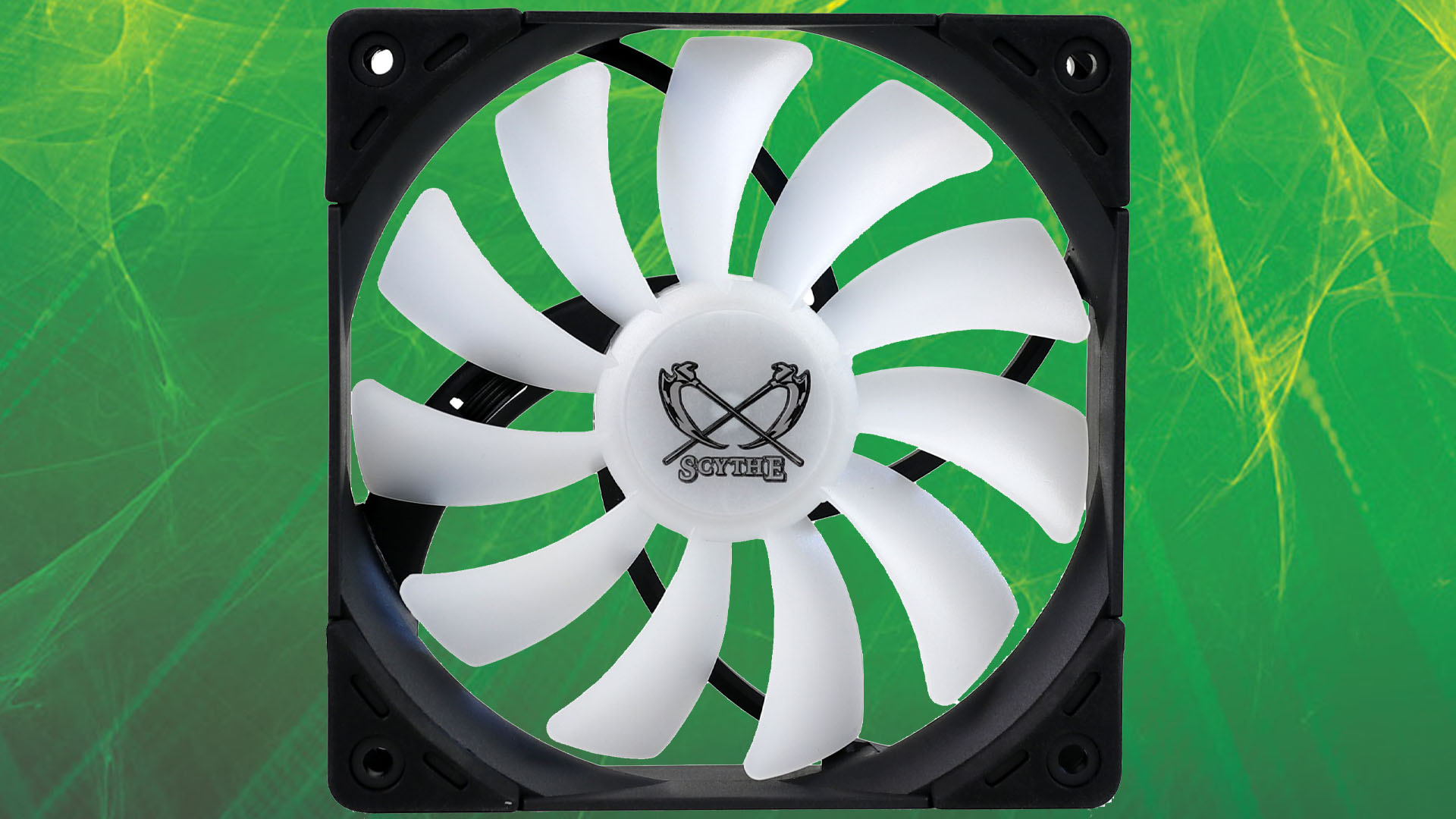
4. Scythe Kaze Flex 120 RGB
The best budget PC fan is the Scythe Kaze Flex 120 RGB.
Scythe Kaze Flex 120 RGB specs:
| Max speed | 1800rpm |
| Stated noise | 36dBA |
| PWM control | No |
| RGB lighting | Yes, 4-pin |
| Accessories | Molex to 3-pin adapter |
Pros
- Good airflow
- Reasonable efficiency
- Low price
Cons
- Loud at most speeds
- No PWM control
- No 3-pin digital RGB lighting
An amazingly low price coupled with RGB lighting and impressively high airflow makes the Scythe Kaze Flex 120 RGB a great option for those seeking power and dazzle for a low price. It’s not the quietest fan going, though, so isn’t ideal for silence-focused PC builds. Find out more in our full Scythe Kaze Flex 120 RGB review.
How we test fans
Fans are vital PC components, but not all fans are created equal. Some are highly efficient and shift more air while generating less noise than their siblings, while some lack the grunt to be flexible enough to handle heavy heat loads on hot days.
We’ve test fans with a sensitive anemometer to measure airflow, and test each fan using PWM control where possible, at its maximum speed in terms of airflow in meters per second (m/s) and noise in decibels (dBA), but also at certain fixed settings.
To start, we set each fan to 1,000rpm to give a speed-normalized result that’s more useful than comparing at 7V, for example, where each fan will likely be spinning at different speeds. Not all fans have the same maximum speed either, so using a fixed speed they all can achieve means every fan can be tested at the same speed. This is also closer to the speed at which your fans are likely to be spinning at low to medium loads, so the airflow and noise it produces here are clear indicators of efficiency.
We also carry out a noise-normalized test at 50dBA, which typically sees most fans spinning between 1,000rpm and 1,400rpm. If you’re noise-sensitive and tend to tune your fan speed according to the noise it makes, then knowing which fans shift more air than others at the same noise level is very useful.
As some fans are extremely quiet at 1,000rpm, we place our sound meter closer to the fan than you would typically sit from your PC. We’re not so much interested in proving manufacturers’ noise level claims as we are in obtaining results for all fans in an isolated test, so we can compare them all fairly, even at lower speeds. We rate fans on their raw air-shifting potential, but give more points for efficiency, while also taking into account sound quality and features such as RGB lighting.
Best PC fan FAQ
Are PC fans 12V?
Yes, most modern PC fans run on a 12V supply. However, many modern fans use pulse width modulation (PWM) signaling to control their speed, so simply attaching a 12V supply won’t allow you to control fan speed. Older ‘DC’ fans can be controlled in this way, using an analog fan speed controller (a variable resistor) to reduce the voltage supplied to the fan. Some even more modern fans, such as Corsair iCUE Link fans, don’t even support a normal 12V connection at all, instead requiring a proprietary connection to work.
PC fan size guide
PC fans can come in a wide variety of sizes. However, the most common are 80mm, 92mm, 120mm, and 140mm. In general, the larger the fan, the slower it can spin to move the same amount of air, which is why larger fans are favored for quiet PC builds.
Most PC case and CPU cooler fans are 120mm or 140mm but small form factor versions of both may use 92mm fans. 80mm fans are generally reserved for specialist confined-space applications. Most are 25mm thick but slimline 15mm 120mm fans are quite common. All fans generally work in the same way, using a 12V supply with either DC of PWM speed control.
Are DC or PWM PC fans best?
Older fans used a simple DC speed control method whereby you just vary the voltage to the fan, using a variable resistor fan controller (or internal motherboard fan voltage control), to alter the speed of the fan. However, most modern fans use PWM control that uses an extra wire that carries a speed control signal to the fan. PWM is generally the more desirable as it provides more precise control – including easily being able to turn off the fan – but DC can be useful for some niched applications.
Finally found the fan of your dreams? Why not check out our other best-of guides to complete your setup. You can seek out our choice of best PC case, best gaming headset, best gaming mouse, or the best CPU for gaming
